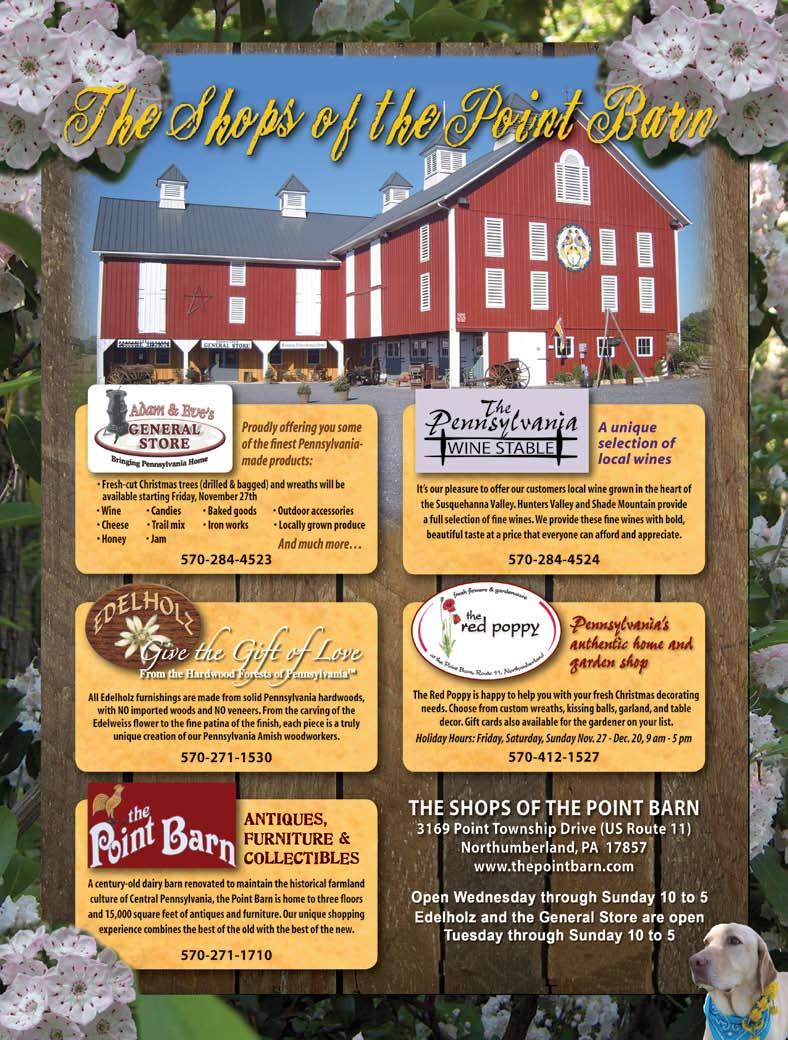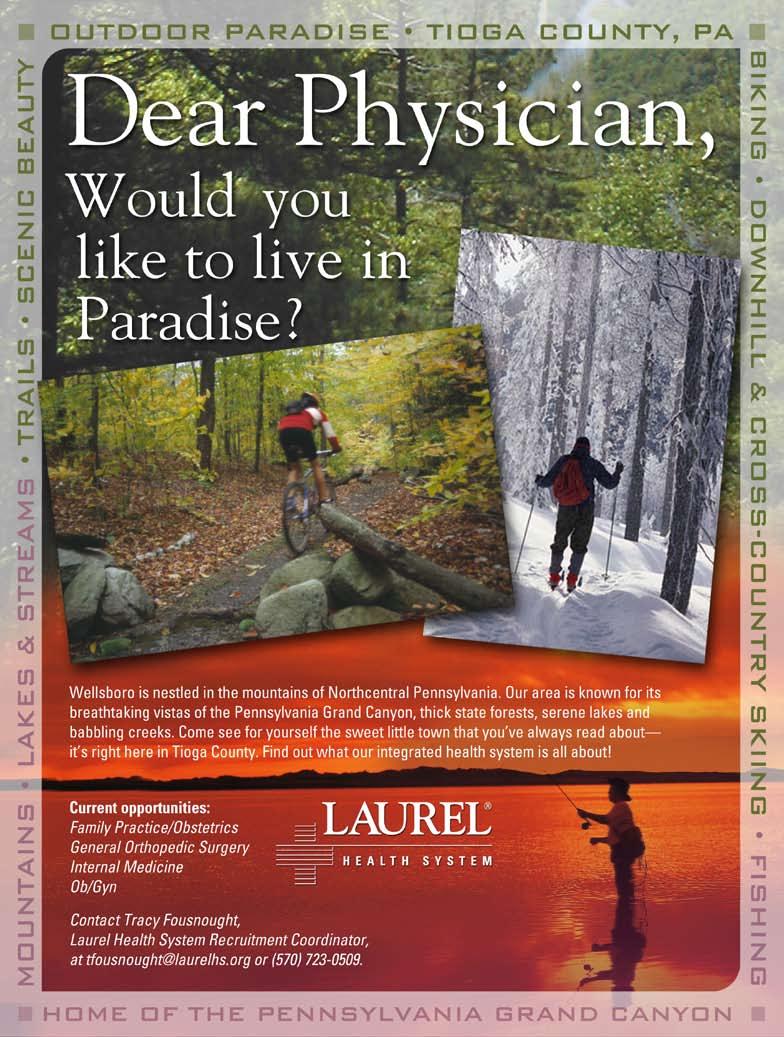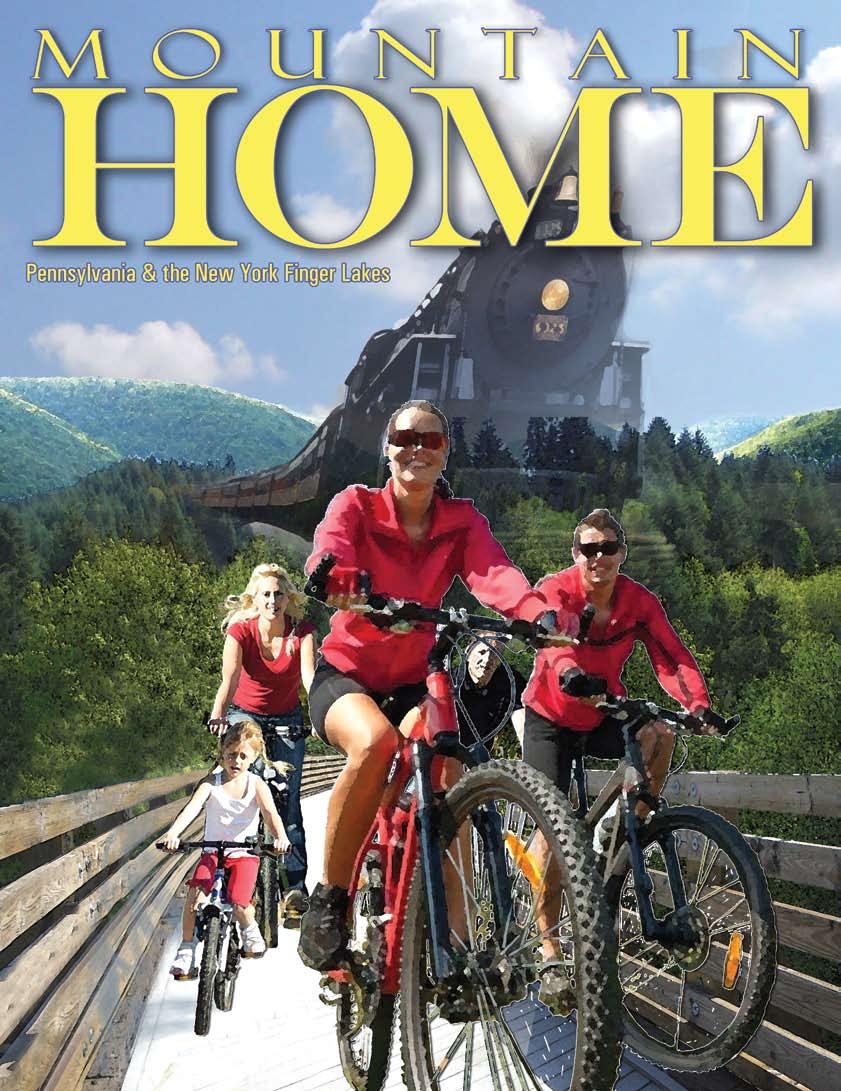

STEAM SWEAT to FROM



By Nicole Hagan
The tin can caravan is rolling our way.
By Joyce C. Tice
Tracking a Mansfield business from creation to demolition

Dawn Bilder
Tony Espisito trades in his pizza wheels for some high power ones. 18
Lunker
By Fred Metarko
The Lunker and his friend can’t let anything interfere with hooking a nice trout

By Angela Cannon-Crothers
1,000 births and no stopping for this Fingerlakes midwife
By John & Lynne
Diamond-Nigh
Is it too much to ask for civility?
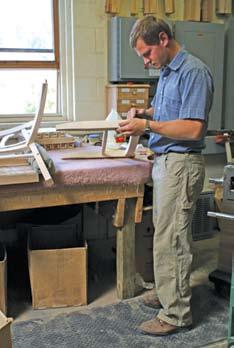
Bicycling in Heaven
By David Ira Kagan
A guide to the beauty, grace, and toilets of the Pine Creek Rail Trail. Playing
Harpoon
By Martha Horton
After sixty years, performers and brothers Tony and Dom Sgro still make beautiful music together. Morris Chair Shop
By Nicole Hagan
Whether you want to rock or roll, these chairs will have you sitting pretty.
Top: Flowers scattered along the Pine Creek Rail Trail. Middle: The Sgro Brothers with television personality Herb Shriner circa 1950s. Bottom: Hans Stoltzfus handcrafting a chair at Morris Chair Shop.
art by Tucker Worthington.
A Cheesy Family Business
By Nicole Hagan
A failing dairy farm is transformed into a world-class creamery.
Fingerlakes Wine Review
By Holly Howell
If it’s pretty in pink, then it’s the best wine to sip this spring.
Someplace Like Home
By Dave Milano
Dave deals with the sting of warm weather.
a Gem!
By Suzanne Meredith
In business since the 1800s, Bong’s Jewelry is one not so hidden treasure.
Back of the Mountain
Catbird Seat
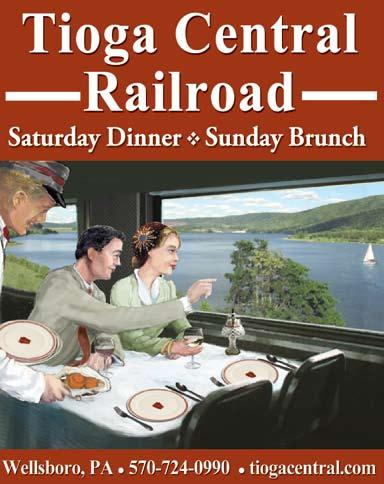

P ublisher
Michael Capuzzo
e ditor - in - C hief
Teresa Banik Capuzzo
A sso C i A te P ublisher
George Bochetto, Esq.
M A n A ging e ditor
Kay Barrett
C o P y e ditors
Mary Nance, Kathleen Torpy
s t A ff W riter
Dawn Bilder
i ntern
Nicole Hagan
C over A rtist
Tucker Worthington
P r odu C tio n M A n A ger / g r AP hi C d esigner
Amanda Doan-Butler
C ontri buting W riters
Kay Barrett, Dawn Bilder, Sarah Bull, Angela Cannon-Crothers, Jennifer Cline, Matt Connor, Barbara Coyle, John & Lynne Diamond-Nigh, Patricia Brown Davis, Steve Hainsworth, Martha Horton, Holly Howell, David Ira Kagan, Roberta McCulloch-Dews, Cindy Davis Meixel, Suzanne Meredith, Fred Metarko, Karen Meyers, Dave Milano, Tom Murphy, Mary Myers, Jim Obleski, Cornelius O’Donnell, Audrey Patterson, Gary Ranck, Kathleen Thompson, Joyce M. Tice, Linda Williams
P hotogr AP hy
James Fitzpatrick, Ann Kamzelski
s A les r e P resent A tives
Christopher Banik, Michele Duffy
A CC ounting
Zachery Redell
b e A gle Cosmo
Mountain Home is published monthly by Beagle Media LLC, 39 Water St., Wellsboro, Pennsylvania, 16901. Copyright 2010 Beagle Media LLC. All rights reserved.
To advertise, subscribe or provide story ideas phone 570-724-3838 or e-mail info@mountainhomemag.com. Each month copies of Mountain Home are available for free at hundreds of locations in Tioga, Potter, Bradford, Lycoming, Union, Clinton, Wyoming, and Sullivan counties in Pennsylvania; Steuben, Chemung, Schuyler, Yates, Seneca, Tioga, and Ontario counties in New York. Visit us at www.mountainhomemag.com.
Get Mountain Home at home. For a one-year subscription to Mountain Home (12 issues), send $24.95, payable to Beagle Media LLC, to 39 Water St., Wellsboro, PA 16901.
LOOK FOR Home & Real Estate magazine wherever Mountain Home magazine is found.
Relocating to our neck of the woods?
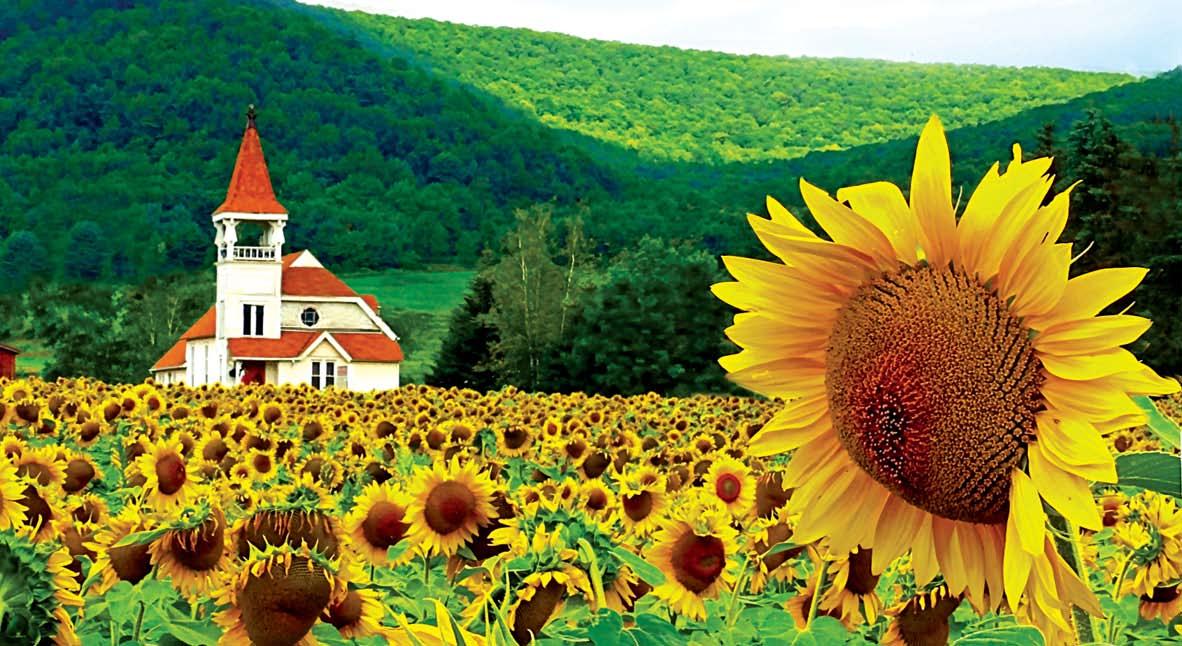
If you're planning a move to our area, you'll need a full service financial institution and we hope you'll consider us A local, independent, community bank, we've been around since 1864. We have the products and services you need and a commitment to world class customer service that sets us apart We're conveniently located in seven Northern Tier counties, with 24 offices to serve you, so we're always close at hand when you need us Visit us online at www cnbankpa com to see what we can offer you
Citizens & Northern Bank serves you from 24 convenient offices in Bradford, Cameron, Lycoming, McKean, Potter, Sullivan and Tioga Counties Contact us toll-free at 1-877-838-2517 Visit us on the web at www cnbankpa com

Photo by Bernadette Chiaramonte-Brown of Wellsboro
August winner - 2010 C&N Calendar Photo Contest
MOUNTAIN Ch ATTER
On the Road Again
Some people hook their campers up and cruise on down the dusty road to find a scenic lakefront or a comfortable camp site. The Tin Can Tour Caravan, however, hooks their visitors up with a glimpse of the past and a cool spot along memory lane.
From June 4 through the 14 the Tin Can Tourists—an all-make and all-model vintage trailer and motor coach club—will set off on their PA Route 6 caravan. The procession features approximately fifteen to twenty vintage trailers and motor coaches that will traverse across U.S. Route 6, starting west along the Ohio boarder and moving east to Meadville (June 4-5), Port Allegany/Roulette (June 6–7), Galeton (June 8–9), and Mansfield (June 10–11). The caravan will stop for two days at each location, hosting an open house on every second day for residents and visitors to come and view the classic campers.
“There will be some marvelous looking campers; they are all very unique,” says Terri Dennison of the Pennsylvania Route 6 Heritage Corporation. “Every other year the Tin Can Tourists choose an historic highway to drive across, and this year will be their second time returning to Pennsylvania since they drove the National Road back in 2006.”
For more information on the Tin Can Tourists or the PA Route 6 Caravan, visit www.tincantourists.com. ~ Nicole Hagan
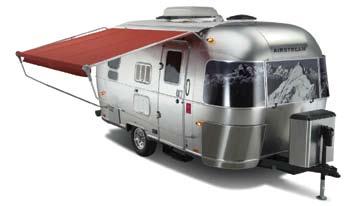
Oops & Etc.
Due to a broken link in last month’s issue, our Back of the Mountain photo by Bernadette Chiaramonte Brown appeared pixelated.
Bernadette is a talented local self-taught photographer, whose photos have appeared on the Visit PA web site and have also been used on Pennsylvania tourist brochures.
Bears are not her only subjects of interest. Local landscapes and creative shots have made Bernadette’s portfolio both vast and breathtaking.
Turn to this month’s Back of the Mountain for another shot by Bernadette.
Bernadette’s photograph of a field of sunflowers in front of a church in Middlebury Center, Pennsylvania, is featured for the month of August in Citizens and Northern Bank’s 2010 calendar.
Complete Schedule
June 4 Arrival at the Brookdale Family Campground in Meadville, near mile-marker 24
June 5 Open House at the Brookdale Family Campground (Meadville) from 1 p.m.–4 p.m.
June 6 Arrival at Port Allegany, between mile-marker 159 and 160, with a “walk around” viewing of the trailers/motor coaches, participation in a car show, and a meal
June 7 Open House at the Allegheny River Campground in Roulette, near mile-marker 170, from 3 p.m. – 7 p.m.
June 8 Arrival at John J. Collins Memorial Park in Galeton, near mile-marker 198
June 9 Open House at the John J. Collins Memorial Park (Galeton) from 1 p.m. – 4 p.m.
June 10 Arrival at Town Park in Mansfield, near mile-marker 234
June 11 Open House at Smythe Park (Mansfield) from 1 p.m. – 4 p.m.
June 12 Heads back west to Conneaut Lake Park
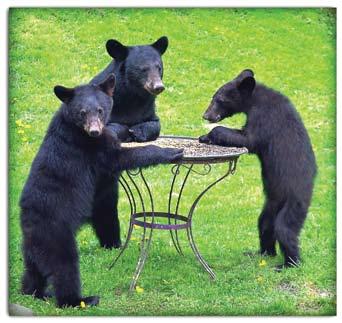
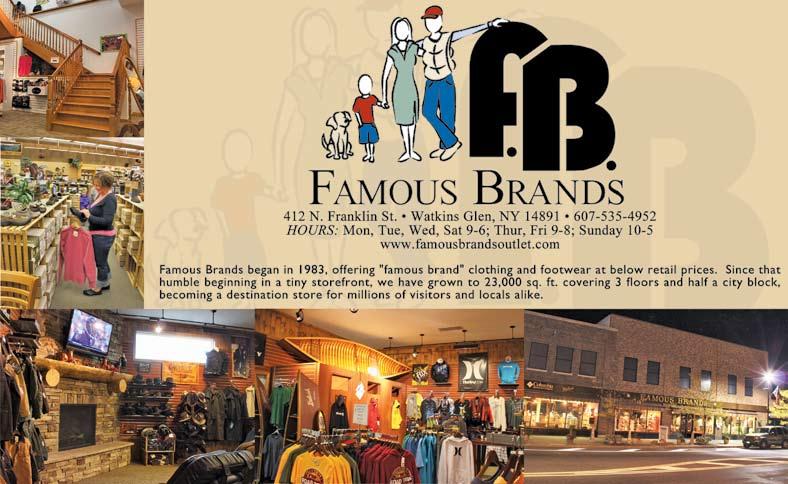
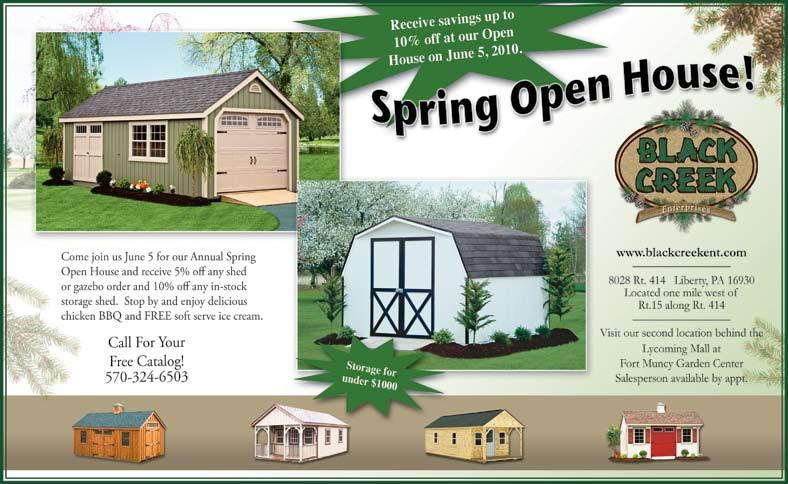
trail to H E av E n
a guide to the beauty, grace, and toilets of the Pine Creek Rail Trail

By David Ira Kagan

If there’s a bicycle path in heaven, it’s difficult for me to imagine one filled with more glories than the sixty-two-mile-long Pine Creek Rail Trail. From the New York Central Railroad caboose in the parking lot at the southern terminus in Jersey Shore, Pennsylvania, to the Pag-Omar Farms Market at the northern terminus at Stokesdale just above Wellsboro, this body- and mindand soul-refreshing route offers cyclists a smorgasbord of sensory experiences.
Take along a bicycle bag into which you put, in case of a flat, a spare tube, a patch kit, a mini air pump, a couple of tire levers, and an adjustable wrench. Either know how to repair a flat, or take along written instructions (the process really isn’t difficult). You’d also be wise to pack a small first aid kit, including sun block and insect repellent. And carry water, perhaps some energy bars, and a poncho in case of rain. That’s about it, except don’t forget your camera and some money for the food available at the half-dozen or so establishments located along the way.
The hard-packed gravel trail, although listed as having a two-percent downgrade from north to south, seems quite flat as you are cycling on it in either direction. It’s really the wind direction that determines which way the pedaling is easier. Even averaging a cycling speed of only seven or eight miles an hour, you can easily cover the entire trail one way, with reasonable time set aside for rest and food stops, in much less than the daylight hours of some late spring, summer, or early fall day that you will never forget.
Since I live in Torbert Village, only four miles above the southern terminus, I’ll narrate what a daytrip from south to north could offer. It’s a trip I myself enjoyed twice last year and expect to do at least once again this year.
The parking lot off Railroad Street in Jersey Shore is a spacious, paved one, and the recently built comfort station located there, with its flush toilets, assures you a comfortable start to your day. For those who prefer breakfast before hitting the trail, I recommend the Crest Restaurant on Allegheny Street in Jersey Shore, only a half-mile away.
At the trail parking lot is stone mile-marker L-168. Look for these old New York Central Railroad (NYCRR) mile-markers all along your
journey north (although quite a few, especially once you get above the village of Cedar Run, are, unfortunately, now missing after the removal of the tracks in 1988-89). The “L” stands for Lyons, New York, where this north-south branch of the old railroad met the main east-west line, 168 miles north of Jersey Shore.
Not far along on this wonderful outdoor odyssey, after crossing Railroad Street (be careful of vehicular traffic here) just a few hundred yards from the parking lot, you get to enjoy a short downhill ride, with this sole paved section of the trail then changing into the easy-riding gravel that will scrunch pleasantly under your tires for the next sixty-one miles.
Proceeding on what was the old railroad bridge over four-lane U.S. Route 220, you soon come across mile-marker L-167. Two sights are worth noting in this area. First is a section of the old NYCRR track positioned just off of and parallel to the trail. Second are the unusual vertical rock strata on the east side of the path, providing testimony of mighty geological activity ages ago.
Four miles into your trek, sailing past White Tail parking access and sleepy Torbert Village, after you pass mile-marker L-164, you see the first of four old, steel truss railroad bridges that you’ll cross. Stop in the middle to view Gamble Run bubbling into Pine Creek from a west-side mountain hollow.
After cruising past a half-mile-long open field, the next three miles offer you a close-up view of Pine Creek on your right and a mountainside next to you on your left. Just fifty yards past milemarker 161, in the woods on your left beside two old, tall pine trees, look for the gravestone of Catharine Bonnell, a pioneer baby girl who died back in 1852 at the age of only one.
Then on the right notice the grounds of

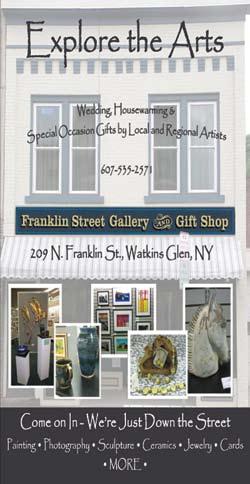
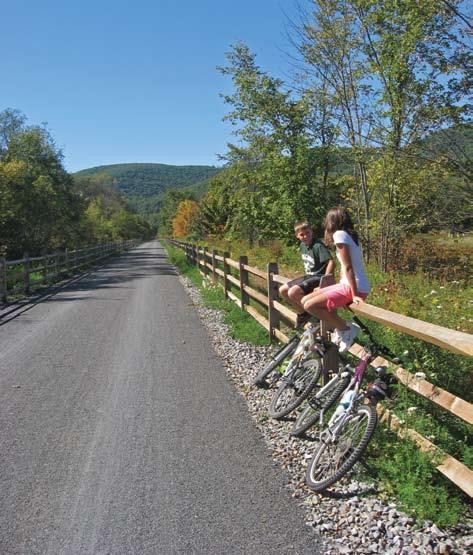
Camp Kline, a Boy Scout camp from 1920 until the mid-1970s. If you want to take the time, you could walk down to see the two remaining totem poles and other structures. Back up on the trail not far, on a hot day you’ll be grateful for the cold water available from the old-fashioned water pump next to the Bonnell Flat comfort station.
Then comes a second beautiful old steel railroad bridge. Looking south from this bridge, you can see the stone wall erected between State Route 44 and Pine Creek by Works Progress Administration workers back in the 1930s.
On the other side of the bridge, as you pass the access parking lot at the village of Ramsey, look to your right to see if you can spot the two alpacas grazing in the fenced-in field across Route 44. And read the plaque at the lot, which informs you of the origin of the village’s name.
The next village going just three miles north is Waterville. There you enjoy crossing yet another scenic railroad bridge, this one over Little Pine Creek near where it empties
into Big Pine Creek. At Waterville you have a choice of three eating places—the Pine Creek Valley Lodge, the Waterville Tavern (erected in 1825) and McConnell’s (subs and soft ice cream the specialties).
North past the next parking area and mile-marker 156 finds you once again right alongside Pine Creek. Marvel at the very obvious, extensive gnawing activity of beavers around mile-marker 154 just south of the Dry Run comfort station.
Two miles farther on, as you cross the little bridge over Callahan Run (it’s labeled) in the village of Jersey Mills, note on your immediate left the post office, which occupies half of a very old house. Serving the small community since 1855, it is currently run weekday mornings by Postmaster Kenneth O. Kelley Jr., the thirdgreat grandson of Pine Creek Valley pioneer Abraham Harris.
Just north of the village of Jersey Mills is a fenced section of trail paralleling State Route 414. The view of a bend in Pine Creek at this point and of the surrounding mountains is gorgeous.
Above: Konnor (left) and Karli Spencer take a breather along the newest section of the trail between Darling Run and Wellsboro Junction. Facing Page Top: Our writer prepares to head north from Jersey Shore, Pennsylvania. Facing Page Bottom: Rail Trail map available at the Tioga County Visitors Bureau.
Arriving at the village of Cammal, you could make stops at yet another trailside comfort station (very near where, just this April, I was blessed with the absolutely beautiful sight of a bald eagle soaring quite low over my head), the Cammal General Store, or the Wagon Wheel Restaurant.
North of Cammal come the Ross Run and then the Clark Farm/ Utceter Station trail access areas (no comfort stations at either). Between these two is a long, fenced section of the trail paralleling Route 414 again, with another outstanding view of a sweeping turn in Pine Creek, about where Wolf Run enters under the trail from the mountain on the east. Then about a mile past where the fencing ends, Black Walnut Bottom campground—a well-shaded area, with bathrooms and picnic tables—lures bicyclists in for a rest.
Above Black Walnut Bottom about a mile is an old pioneer graveyard just to the left of the rail trail. In this Utceter (also called Old Callahan) Cemetery are the gravestones of perhaps about fifty souls, most of whom died in the mid-1800s, including quite a few young women and children. The exception is that of pioneer John Callahan, who died in 1891 at the age of 100.
Rolling into the village of Slate Run, you have a choice of two establishments for a nice lunch. Wolfe’s General Store offers tasty, made-to-order sandwiches, which include a dill pickle on the side. Or a sit-down meal (they have great cheesesteaks) is available across the concrete Pine Creek bridge at the Hotel Manor, where you have your choice of eating inside in a spacious, bug-free dining area, or outside on a wooden terrace overlooking Pine Creek, next to a plaque honoring Pine Creek’s first pioneer, Jacob Tomb.
As you cycle north just past the Slate Run access parking lot, note the extensive, weed-overgrown field along the east side of Pine Creek. This was the site of the largest lumber mill in the valley, the James B. Weed and Company hemlock sawmill, which operated during the great lumber era from 1893 to 1910.
Just a couple miles above Slate Run, you reach the Hilborn Fields comfort station. Look out for wildlife here, as I have come across deer (one time about a dozen were out in the field), a porcupine once “guarding” the door of the men’s room, and a black bear (walking along the path not far ahead of me, finally bolting down off the trail and crashing through the bushes toward Pine Creek).
Arriving at Cedar Run Village, approximately thirty miles into your ride (about the halfway point), you don’t want to miss out on having a Perry’s ice cream cone at the General Store (built circa 1895). It’s also worth it to at least take a look inside the Cedar Run Inn directly across the street, an establishment advertising “fine food and lodging since 1891.” And you don’t want to be hungry when you leave Cedar Run, as your next chance for food along the trail isn’t until the northern terminus over thirty miles away.
You’ll cross yet another steel truss bridge at the north end of Cedar Run, after passing the sprawling Pettecote Junction Campground. Stop in the middle of this bridge to view a long stretch of Pine Creek to the north.
It’s three miles past “the narrows” (look at Route 414 high above on the steep mountainside) to the Rattlesnake Rock access area (I’ve never seen rattlesnakes there!), then another mile to Hoffman campground, a little-known gem of the trail, well worth the short ride down the dirt side-road. With its picnic tables, shade trees, comfort facility, water pump, and welcoming grassy banks along Pine Creek, this heavenly spot will help soothe any aching muscles you may have.
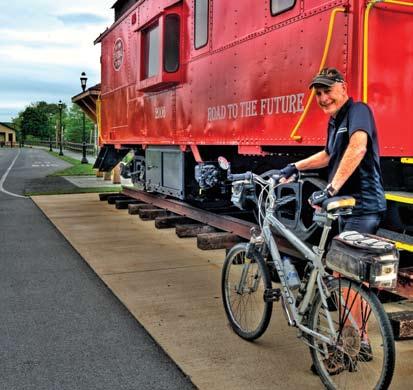

Another mile north you enter the Village of Blackwell over yet another bridge crossing Pine Creek. Enjoy, for a brief change, the short downhill to Route 414 (comfort station and access parking on the left) and then the 100-yard-long, gradual uphill past the Blackwell Hotel (it’s been closed of late), the old Methodist Church, and village houses.
Eight miles of bicycling takes you up to Tiadaghton campground. On your way you may very well come across some rattlesnakes, especially at a large rockslide just a couple miles before the camp. The expansive camping and picnic ground has comfort facilities, a water pump, and a number of picnic tables right down by Pine Creek. With no bank here, you could easily dip your tired feet and legs into its cooling waters.
From Tiadaghton campground north about eight more miles to the Darling Run rest area, you pass through the most impressive section of Pine Creek Gorge. The views of the creek and surrounding mountains here are unsurpassed in beauty. Note the Turkey Path coming down from Leonard Harrison State Park about four miles above Tiadaghton, and,
See Rail Trail on page 28
From Spikes and Rails to Bikes and Hikes
Ralph Waldo Emerson once said, “Do not go where the path may lead; go instead where there is no path and leave a trail.”
When the railroad tracks through the Pine Creek Gorge closed down in October of 1988 after over a century of use, there may have been a path—but certainly no trail.

The Rail Trail Coalition was fixed on changing that. With the help of the National Rail Trail Association, this group of fewer than a dozen fought to pass legislation that would allow for a trail stretching from Wellsboro Junction to Pennsylvania’s Jersey Shore. They faced much opposition from the Pine Creek Preservation Association and local residents, however, “who worried that the trail would disturb the character of the land or that they’d end up with too many tourists in their backyard,” says Joe Smith, a member of the Rail Trail Coalition.
But after much lobbying, they were able to pass legislation and convince the Advisory Council to begin building what is now known as the Pine Creek Rail Trail. The first phase of the trail from Ansonia to Blackwell opened up in 1996, and since then three more phases have been added, with one more possible phase into Wellsboro expected in the future. “Other than its length, not much has changed since the first phase was built,” says Chief Ranger Brian Caldwell from the Tioga District of DCNR. “We’ve just always tried to keep everything as natural as possible.”
Emerson would be proud.
~ Nicole Hagan
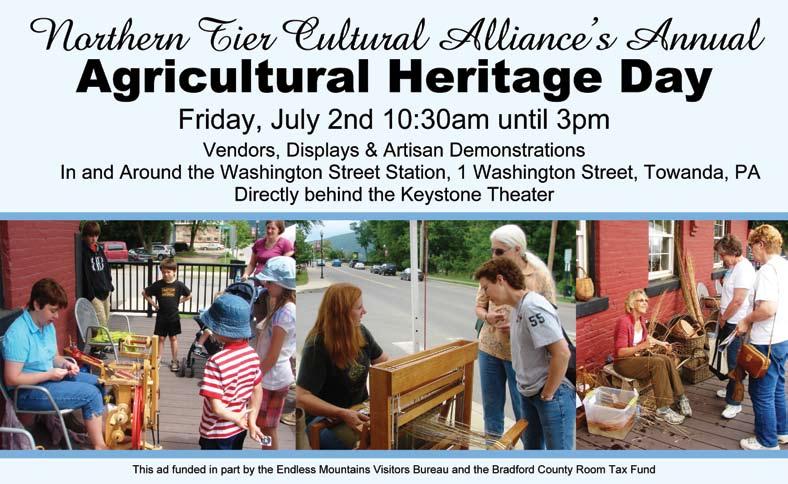
Southern trail terminus with original New York Central Railroad mile-marker. The “L” references Lyons, New York, a major railroad juction 168 miles north of Jersey Shore, Pennsylvania.

Looking Back Tracking the X-Trail
Joyce M. Tice
The adage, “When an old person dies, a library is gone,” applies to our old buildings, too. Almost two centuries of memories went into the dumpster in January in Mansfield when the oldest building on Main Street was demolished. Built in 1829 as the Hotel Brundage, it was located at the address later known as 18 South Main Street. Little is

known of its early history, but by 1873 it was operating as a hotel and restaurant.
In 1903 Mrs. Welch operated a hotel and restaurant in that building; Charles Campbell was the operator by 1906.
The Cheeseman family took over in 1925 and operated as the X-Trail (pronounced “Cross Trail”) Restaurant. During that time the restaurant became part of the national news when in March of 1932 a letter to Charles Lindbergh from the alleged kidnapper of his child was received. A rendezvous was expected to be in Mansfield at the crossroads of main highways Routes 6 and 15. A state police stakeout yielded nothing.
Ernie Vosburg took over the restaurant in 1946 and operated it as the Mansfield Restaurant, although everyone locally called it Ernie’s Restaurant. He and his wife, Fran, lived in the apartment above the restaurant. I worked there as a waitress while in college, and I have always been grateful to Ernie for
giving me a job so I could pay tuition. The restaurant did a good business with tourists, but the locals and the college students were a major part of the customer base. The local business people convened for coffee every day at 10 a.m. When Ward Austin, local dealer in all things unusual, entered the restaurant, he would crow loudly like a rooster. Ernie would usually be at the grill in the kitchen and would answer by barking like a dog.
Sometime after 1966 the building narrowly missed serious injury when old Mr. Green pushed his throttle instead of his brake coming out of the A&P
parking lot and went right into Jimmy Carracciolo’s shoe repair shop next door to the restaurant. Jimmy and Mr. Green survived, but the little ramshackle building had to be replaced by a small brick shop. That and the old News Room were later both replaced by the Waldeman Building.
Fran and Ernie retired sometime in the 1970s, and after that the restaurant was operated sequentially by Dutch Pantry, Edgecomb Restaurant of Troy, and Effie and John Antonio, who also ran the Twain Theater. Eventually it became the University Club, dark and dank. The building was vacant for several years after the club closed and was in a state of disrepair. A new borough building is under construction on the site.
Joyce M. Tice is the creator of the Tri-Counties Genealogy and History Web site (www.joycetice. com/jmtindex.htm). She can be reached at lookingback@mountainhomemag.com.
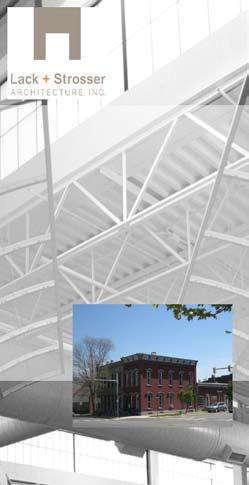


The X-Trail Restaurant as it looked in 1932, when it became infamous during the Lindbergh baby kidnapping case.
Courtesy JoyCe C. tiCe
OU T d O O RS
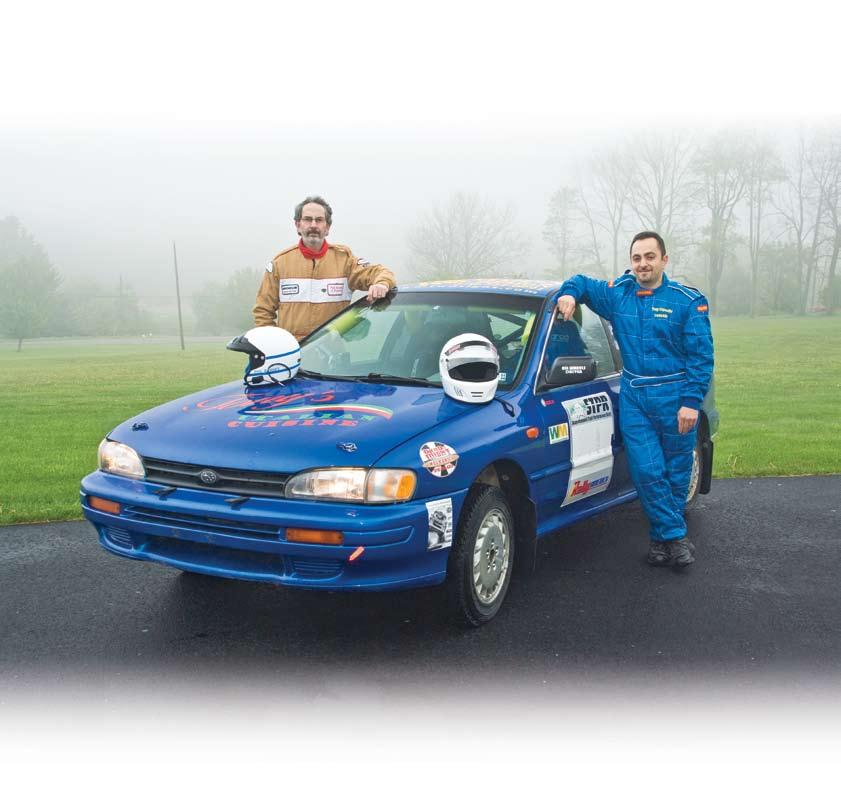
Pedal to the Metal
Wellsboro’s Tony Esposito trades in his pizza dough for a shot at STPR dough
By dawn Bilder
What is at the heart of a rally racer? Perhaps the question is best answered by Wellsboro’s own Tony Esposito, owner of Tony’s Italian Cuisine in downtown Wellsboro: “You’re lucky if you don’t roll. But, if your car does roll, you hope it rolls back over, and you keep going.” Esposito smiles, adding, “The cars are strongly built,” seemingly unaware that his statement testifies to how strongly built the drivers are, too.
Co-driver Phil Barnes and driver Tony Esposito gear up with Tony’s revamped 1993 Subaru.
This year marks the thirty-fourth anniversary of the Waste Management Susquehannock Trail Performance Rally, otherwise known as STPR, on June 4–5. It is Espositos’ first STPR rally and will be held at N41degrees46.1791’W77degrees 12.401’—or Wellsboro, if you don’t have access to GPS coordinates. Performance rallying is the demanding and exciting motorsport sanctioned by Rally America.
“Rally’s been my passion since I was a kid,” says forty-year-old Esposito, who grew up in Naples, Italy, watching War Rally Championship, WRC, the predominant rally circuit in Europe. About a year and a half ago, he decided to become a driver instead of a spectator.
He has already participated in two rallies in New York this year and in ice racing, where a track is cleared on a frozen lake and cars race around it. But it is the STPR rally that he’s really looking forward to. It was this race that drew him to Wellsboro in the first place. He and his wife, Victoria, fell in love with the area and decided to open their restaurant and raise their three children here.
So, how does one go from spectator to driver? Esposito bought a 1993 Subaru, which
was rally-ready, but needed a few updates— some bodywork, cosmetic work, and motor work. “Basically, when you buy a car,” says Esposito, “it has to have a roll cage, harnesses, and steel or carbon fiber seats, which are very strong and have to be bolted in.” Then he applied for a regional racing license, which he applied for online with Rally America, along with a resume describing the races he participated in this year.
Commitment also plays a large part. “I never had the chance or time to race,” Esposito explains. “But now I’ve decided to make the time.” Finally, a co-driver, or navigator, must be found. Esposito’s co-driver is Phil Barnes, who stopped in one day to get pizza at Esposito’s restaurant and saw Esposito’s rally racing photos on the wall. “He’s great,” says Esposito, “It’s important to have a good codriver. They read the stage notes and let you know what turns are coming up and how fast you should take them.”
STPR is one of America’s best-known rally events because the course features some of the most challenging roads in the world, and it has a high percentage of stage miles. It is Round Five of the Rally America Championship Series.
Taking twelve hours to complete, the course
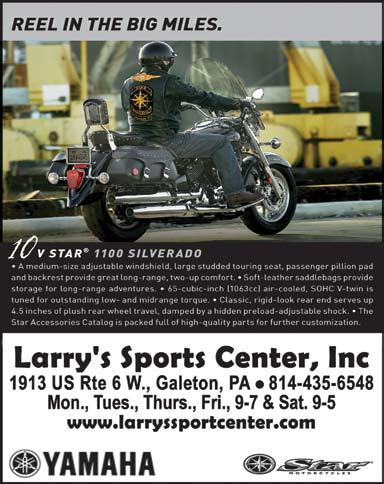
starts at the Green in Wellsboro, covers about three hundred miles, including one hundred and twenty-eight competition miles in ten stages, and travels through two counties on Pennsylvania state forest roads, some running along the edge of the Pennsylvania Grand Canyon. STPR regularly draws the best rally teams from the United States, Canada, and abroad who have fun putting their skills to the test. Last year’s STPR winners, driver Ken Block and co-driver Alex Gelsomino, are ranked in the top five on the Rally America circuit.
STPR’s main sponsors are Waste Management and Citizens and Northern Bank. The Wellsboro Chamber of Commerce also contributes. Right now Esposito is sponsoring himself, but would welcome any additional sponsors. Smiling, he says, “It’s never too late for sponsorship.”
INFORMATION
To sponsor Tony Esposito, drop by his restaurant, Tony’s Italian Cuisine, at 3 Main Street in Wellsboro or call him at (570) 7242090. For more information about STPR, visit www.stpr.com or call the Wellsboro Chamber of Commerce.

And the Winner Is...
Galeton Chamber’s raffle returns with a Polaris ATV, a Harley, or $5,000 cash
By dawn Bilder
Were you feeling lucky that day?
“Not particularly,” Greg Bee says. “I was just doing the family thing. My first baby, Ella, was about five months old, and I was home feeding her, giving her a bath, and trying to get her to sleep. When the phone rang, I just thought, ‘Who is that calling me?’ Then the person on the phone said that I had won the raffle.”
Thirty-four year old Bee, a general manager for three familyowned Napa Auto Parts stores, had bought one raffle ticket for the Galeton Chamber of Commerce’s first raffle fundraiser from a deliveryman who came to his store. Winners of the raffle could choose between a new a Yamaha Grizzly 450 ATV, a HarleyDavidson Iron 883 motorcycle, or $5,000 in cash.
“At first, when they called me and told me I won, I was shocked, and I thought, ‘Okay. Wow. Seriously?’ I never win anything. They needed me to pick which prize I wanted right away, so I thought for a few minutes. I had to go with the Harley-Davidson Iron 883.”
This year the winner of the raffle will be able to choose between a 2010 Polaris Sportman 500 HO ATV, a 2010 Harley-Davidson Iron 883, or $5,000 in cash. Canyon Motorsports, located at 1572 Route 6 in Gaines, Pennsylvania, (814-435-2878, www. canyonmotorsports.com), is providing the ATV. The Harley-

Davidson is being provided by Larry’s Sport Center, 1913 US Rte. 6 W. in Galeton (814-435-6548, www. larryssportcenter.com).
Raffle tickets cost $5 per raffle or 5 for $20. This year’s raffle winner will be chosen during the Gale Fest on September 4. The Gale Fest is a free multi-day festival of arts which includes music, painting, crafts, and activities for the whole family. Go to www.visitgaleton.com for more information on the raffle and the Gale Fest.
Visit one of these local sponsors to buy your raffle tickets




Balsam Real Estate Settlement Co. 19 Crafton St., Wellsboro, PA 16901 570-723-7200 www.balsamsettlement.com
Brick House Deli 4 West Main Street Galeton, PA 16922 814-435-2444
Ed-U-Caterers 14 1st Street Galeton, PA 16922 814-435-2603
Canyon Motorsports Route 6, Gaines, PA 16921 814-435-2878 www.canyonmotorsports.com
Cimino Hardware Inc. 16 West Street Galeton, PA 16922 814-435-9911
Endless Mountain Real Estate Co. 22 E Main St., Galeton, PA 16922 814-435-7780 www.endlessmtrealestate.com
Galeton Drug 20 West Street Galeton, PA 16922 814-435-6588
Heart’s Desire 27 W. Main St., Galeton, PA 16922 814-435-2280 www.visitheartsdesire.com
John’s Sporting Goods 27 Whispering Pines Lane Galeton, PA 16922 814-435-3544
Lakeview Cinema & Starlight Video 11 Germania St. Galeton, PA 16922 814-435-3513 www.movieclock.com
Lydia’s 14 East Main Street Galeton, PA 16922 814-435-2411
Nob Hill Motel
289 Route 6 East Galeton, PA 16922 814-435-6738 www.nobhillmotel.com
Cheryl Main, co-owner of Larry’s Sport Center, Greg Bee on his new bike, and Gale Fest organizer John Tubbs.








The Lunker Keep On Fishing
Fred Metarko
During winter I’m busy preparing my fishing tackle for the next season. Memories of the past season run through my mind. The ordinary days do not come to mind as often as the ones when things go wrong.
One day, a few years ago, I was fishing with Curt Sweely on Keuka Lake. It started out as one of those ordinary days on the water. The sun was warming us as we leisurely fished the east shore coves and docks. We caught a fish now and then—it was a good day.
Curt was up front running the trolling motor while I held down the rear of the boat. I turned forward to see how he was doing.
water, using my pocketknife, I managed to cut off the broken end and clamp the hose to the inlet. It worked. The water stopped coming in, the bilge pump was pumping and the boat quit sinking lower in the lake. I stood up and announced, “Repair complete.” Up front Curt was still casting away. He said, “Good now we can keep fishing.”
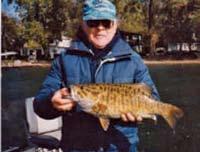
Noticing water in the bottom of the boat. I said, “Curt we have a problem.” Swiveling around in his seat he said, “We sure do. Turn on the bilge pump and look in the battery compartment to see if you can see anything wrong.” I turned the pump on and immediately water started spurting out. Lifting the cover I saw the water was rising fast, almost covering the batteries. The pump couldn’t keep up.
I leaned over the compartment and searched for any visible problem. Then I reached in to check the hose connections. I grabbed the livewell hose. It was broken near the inlet where the water was gushing in. “Curt, your livewell hose is broken,” I said. “Can you fix it?” he asked. “Well, if there’s enough slack in the hose I can cut off the broken end and reattach it,” I replied. “There’s not enough room for both of us to work back there. See what you can do. I might as well keep fishing.” He said, as he turned and made his next cast.
With both hands and head in the compartment and my feet dangling over the
On our next visit to the same lake we were in the same area. Curt was up front casting and running the trolling motor. He was concentrating on controlling the boat in the wind and rough water. Fishing from the back of the boat I hooked into a nice five-pound smallmouth bass. It put on a good fight for a while, jumping a few times and trying to get to deeper water. When I finally landed the fish it hit the floor behind Curt with a thud. He jumped and turned around to see the fish flopping on the deck and said, “Boy, that scared me. Why didn’t you tell me you had a nice fish on? I would have liked to see the fight.” I replied, “You were busy fishing and keeping the boat controlled. I didn’t think I was going to get him. He came up right beside the boat so I just flipped him in.” Curt said, “It’s probably payback for the time you fixed the livewell.”
They started out as ordinary days but turned into ones we often recall whenever stories are told. I better get back putting my gear in order, so I’ll be ready to hit the water next time. Maybe something out of the ordinary will happen that will become a story to be told.
The Lunker is a member of the Tioga County Bass Anglers (www.tiogacountybassanglers.com). Contact him at lunker@mountainhomemag.com.
The Lunker with a five pound smallmouth bass caught on Keuka Lake.

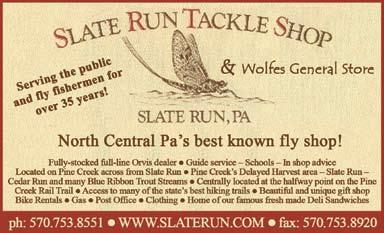
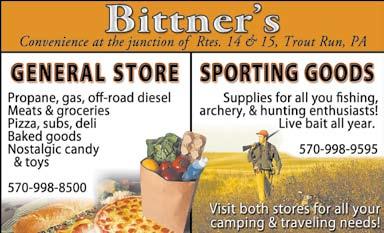





d Y & S OUL
Midwife Tales
Meg Grindrod has been handling special deliveries for nearly four decades
By Angela Cannon-Crothers
Meg Grindrod usually gets her most important calls between midnight and 4 a.m. It’s a tough time of night to head out for work, but she says “I still find myself continually stunned when we are done and a completely new life has begun.” Grindrod, with her thick, salted brown hair, is sitting in a wooden chair in the simple home she shares with her husband, Stuart, in Springwater, New York. She looks at her hands in her lap and says, “all these new lives,” and then shines her eyes up at me, “I think a lot on that these days.” And it’s no wonder, Grindrod, who’s been a midwife for the past 38 years, has attended the deliveries of close to 1,000 babies.
Grindrod is a homebirth midwife in the western/central New York area. She considers herself “a specialist in normal birth; a guardian for the safety of mother and baby.” And although midwifery is an ancient practice, she doesn’t regard herself as a
baby-catcher. She encourages women, or their partners, to catch their own babies. Birthing in hospitals (the method used by over 95% of American women today) is actually a recent phenomena that didn’t become commonplace until the 1950s. So why do some women want to birth at home?
Many people who choose homebirth are seeking a natural, peaceful experience for both mother and baby, one that allows a woman to trust her own body and birth safely in the familiar and comfortable surroundings of their own home. At home a woman can deliver in whatever position is most comfortable and be in charge of her birthing experience. “Having a child certainly isn’t compulsory, but the birthing process is a hugely empowering and life changing experience, not just for the mother, but for her partner as well,” says Grindrod. “And how babies are treated at birth matters a lot—it should be gentle and respectful.”

For Grindrod the path to midwifery began when she was a young woman living in a group house. When one of her friend’s became pregnant, she decided on a homebirth as part of the new counter-culture that urged women to reclaim their bodies. When her friend couldn’t find a midwife locally, she and Grindrod made a pact they would learn the skills necessary to become licensed midwives themselves. “Both my parents were in the medical professions,” says Grindrod, “but I still couldn’t relate to the idea of having babies in hospitals.” Seven years later, after nursing school, a twoyear practicum in Midwifery at SUNY Downstate in Brooklyn, and further apprenticeship with a midwife trained in England, Grindrod delivered her first baby. That was in October 1977. Today, Grindrod’s own apprentice,
Emma Ricci, is of the same cloth. “Homebirth is a feminist choice,” says Ricci. “How we birth is the ultimate expression of autonomy, it’s part of being pro-choice for a woman to decide on this huge event in her life.” Ricci’s own mother was a lay midwife in Vermont. Ricci had known she wanted to be a midwife herself in eighth grade, but life eventually led her in another direction and she became forest fire fighter for awhile. When she and her husband had Grindrod attend their homebirth, Ricci was taken with Grindrod’s approach to midwifery. “When I found out I could apprentice with Meg while attending nursing school, I realized it was the ideal situation,” says Ricci who finds Grindrod’s beliefs regarding birth mirror her own. “She’s very practical, yet gentle and respectful too,” says Ricci. “She knows birth. She’s the type of midwife I want to be someday.”
The women Grindrod attends range greatly in socio-economic class and beliefs. Meg has delivered for: at least one famous rock star, most of the women in the nearby Amish communities, urban professionals, those without health insurance who choose homebirth for economic reasons, families who choose homebirth based on religious reasons, homebirth advocates, most of my friends, and this writer as well. “I like the connection I make,” says Grindrod. “Each birth is like falling in love all over again.” Grindrod delivered her own children at home and now her grandchildren as well. Reflects Grindrod, “I’m just now beginning to attend the births of women who I helped birth years ago.”
To contact Meg Gringdrod visit welcomehomemidwifery.com.
Angela Cannon-Crothers is a freelance writer and outdoor educator living in the Finger Lakes region of New York.
Midwife of thirty-eight years Meg Grindrod.












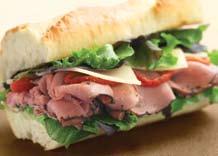




IThe Better World
Oh, Do Be Civil
John & Lynne diamond-Nigh
s civility naive? We both blink. Then we catch our young inquisitor’s drift. Isn’t it just naïve, he wonders, to go on thinking that the niceties of civility matter when all around us an earthquake has rattled the framework of Western society, beleaguering our trust—whether in church, government, or free enterprise? His point: is harping on about civility in such a state of affairs anything more than birdsong?
turns the world, what happened?
And what should civility do to help recenter an atomizing world?
Life comes in at least two flavors. Mine is sweet, my adversary’s is just wrong, like grass-clipping ice cream. Funny thing is, he thinks mine tastes like pepper and housedust. In sports we have a referee. And that is what civility is. It doesn’t care who wins or loses. It wants whoever wins to win fairly and on merit. A referee ensures the integrity of the game and
We have let our politicians warp us into grotesque habits of partisanship. Where wealth or power are at stake, nothing is too craven if it impedes you and advances me.
Tallying the scandals is not the point here. It is fair, though, to wonder if their curious concurrence signals some deeper failure or strain of that mysterious tendon of the soul itself—integrity.
Civility, I go on to suggest, is not a mere mannerism, a mascara: civility is the core of that integrity. Which may, for the purposes of the discussion at hand, make matters even worse. Fact is, too often, in too many cases, civility has been asleep at the wheel. Too many parents are helpless to say, in their own house, at their own dinner table, “Cell phones off.” We have let our politicians warp us into grotesque habits of partisanship. Where wealth or power are at stake, nothing is too craven if it impedes you and advances me. In matters of church and state, much better to cloak scandal in a rigid hush than imperil doctrine or prestige. The young man has a powerful point either way. If it’s birdsong, who cares? If it is one of the gears that
maintains the trust both players and fans have in the outcome. Are we moving, in our society, from boxing to ultimate fighting? Have we, in our greed and our impatient lusts for power, decided to forego the constraining nuisance of any referee at all?
How is that different than morality itself? Chiefly this: morality, too, can be partial. Some of the world’s most hideous conflicts are moral. Conversely, I have never seen two human beings do more than laugh at some dissimilarity or accidental abridgment of civility between them.
I love a good conversation. I’m apt to grow too impassioned. I feel something on my foot. A sharp nudge. I look over at my wife, recognizing the look. “You’re going way over the speed limit.”
“Slow down.”
John writes about art and design at serialboxx. blogspot.com. Lynne’s website, aciviltongue. com, is dedicated to civility studies.




A RTS & L EISURE Those Who Play Together..
Harmonica playing brothers Dom and Tony Sgro have been a duo since childhood
By Martha Horton
For the Sgro Brothers the journey began on the Christmas when Dom was six and Tony was four. Their home, in the little town of Wellsville, Ohio, was always filled with music; their father Frank played violin, mandolin, and guitar.
This Christmas Dom and Tony would begin adding music of their own to the home and, ultimately, to the world. Frank gave them harmonicas— not kiddy toys, but real Hohner Marine Band harmonicas.
Over the years the boys practiced constantly and graduated to more elaborate instruments. Dom chose a 64 Chromonica, which provides every complete scale in every key. Tony opted for the four-foot-long chord harmonica with two hinged units: one for major chords and one for minor chords.
The Sgro Brothers were high school students when they made their first public appearance at an Easter pageant. Bookings followed in Pittsburgh and Cleveland, and they worked with stars such as Tony Bennett, The Four Lads, Don Cornell, and The Four Freshman.
In 1951 Dom and Tony went to see a performance of the Borrah Minevitch Harmonica Rascals and met the star of the show, Little Johnny Puleo. Johnny invited the brothers to audition. Two weeks later they got a call to take the next train to New York—the real start of their professional career. Ultimately, Tony decided to go home and finish high school.
Then Dom, who was studying clarinet in Pittsburgh and had a scholarship to attend Ohio State University, received his draft notice (during the Korean War). After Tony graduated, the brothers joined the Marine Corps together, and both were assigned to play in the Marine Band. The USMC also sponsored them in a national radio show, and they appeared on the Ed Sullivan TV show.
After their discharge the duo went to New York to record for RCA Victor and Columbia Records. But the highlight of the New York years was meeting the Di Nardo sisters from Hornell, New York. Tony married Lucy in 1957; Dom married Angela in 1958.
While in New York, Dom and Tony teamed up with Johnny Puleo

again. They performed in the most prestigious clubs in the world at the time: the Tropicana in Havana; the Latin Quarter in New York; with Dean Martin at the Moulin Rouge in Hollywood; with Frank Sinatra at the Beverly Hilton Hotel; and for the Queen of England at the legendary Palladium in London. They also did a series of TV commercials for Dr. Pepper.
In 1961 Dom and Tony decided to settle with their families in Elmira, where they purchased a restaurant/night club. The brothers performed on weekends while Lucy ran the kitchen and Angela presided in the dining room. The Sgros invited big name entertainers to join them for special appearances—Donald O’Connor, Frank Gorshin, George Morgan, and Johnny Raye, among others.
Lucy died in 1988, and Tony married Dorothy Demyan of Pine Valley, New York, in 2002. Now Dorothy is the brothers’ chauffeur, technical assistant, travel agent, and publicity writer.
“The only thing I can’t get her to do is carry the luggage,” Tony teases.
Although the brothers have closed their club, they are still on stage. In 2004 they were guests at the White House and played for President George W. Bush. In 2008 they were invited by Deana Martin, daughter of Dean Martin, to play at the Dean Martin Festival in Dean’s hometown, Steubenville, Ohio. They continue to entertain on cruise ships, most recently on Princess Lines for the Lou Holtz Hall of Fame, which honors outstanding citizens of the Upper Ohio Valley. The Sgro Brothers themselves were elected to the Hall in 2006.
You can catch their act at area theaters and parks as well as at private parties and fundraisers. (For upcoming appearances, see www. sgrobrothers.com.)
After more than sixty years together as a duo, have the brothers ever considered separate careers?
“I admit we’ve had differences from time to time,” says Tony. “But we never disagreed musically, and we never considered breaking up the act.”
Journalist and novelist Martha Horton is an occasional contributor to Mountain Home and lives in Elmira, New York.


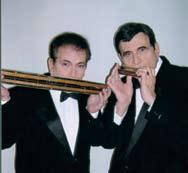
In the 1950s with Johnny Puleo’s Harmonica Gang: Tony Sgro, Dave Doucette, Dom Sgro, Joe Campinelli, Gene DeMase, and Les McGann.
Circa 1960s, Tony and Dom Sgro with Little Johnny Puleo.
2006 induction into the Lou Holtz Hall of Fame. The Sgro Brothers today with harmonicas still in hand.
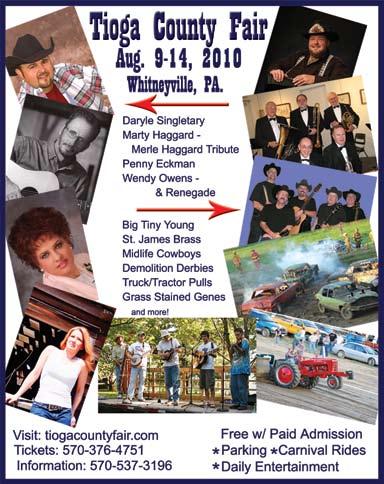
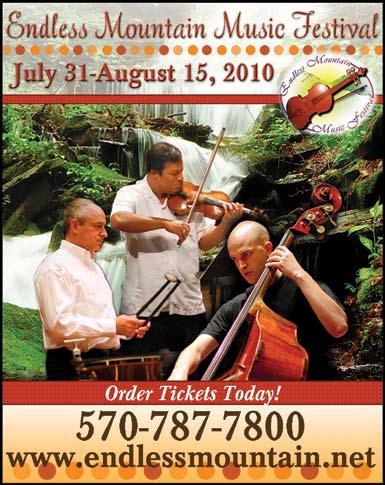































































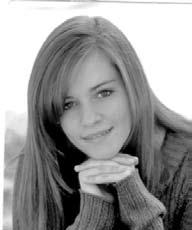


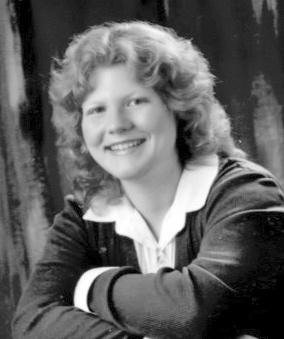




Shannon Lynn Abercrombie Canton Area
Carissa Belles Wyoming Area
Alesha C. Emery Milton Area
Emily Gombosi Montoursville Area
Ashley Hill Sullivan County
Shannon Lynn Abercrombie Canton Area
Lillian B. Newton Jersey Shore Area
Alassa Nudd Cowanesque Valley
Alexandria Olsen Towanda Area
Emily Osden North Penn
Emily Skonecki Mount Carmel Area
Alyson Gail Smith Galeton Area
Kayela Spehalski Cameron County
Karli Spencer Wellsboro Area
Harley Jessie Straub East Juniata

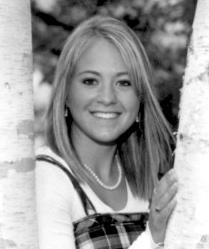


















Allysa L. Kent Williamson
Courtney Mattocks Troy Area
Shelia Victoria McCaulley Liberty ChaNiesha Morgan Mansfield
Samantha Lynn Nagle Smethport
Toncia Plocinski South Williamsport
Elizabeth Potter Warrior Run
Heidi Elaine Reese Coudersport Area
Tessa Marie Runyan Elkland Area
Erika Marie Shaw New Covenant Academy
Alina Vo Muncy
Morgan Walker Central Mountain
Alysia Jo Williams Bucktail Area
Nichole Winder Hughesville
Melanie Wolf Upper Perkiomen
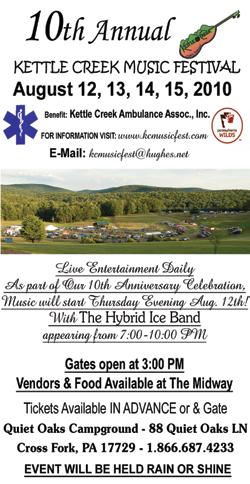


just before the comfort station and access parking, the sign describing the site of the Darling Run Civilian Conservation Corps camp, built back in the 1930s.
One more mile takes you under the U.S. Route 6 bridge at Ansonia. Here, Pine Creek veers off to the west, and you now follow Marsh Creek the final eight miles to the northern terminus. With wheels spinning in a more easterly direction now, you pass the basically one-lane sleepy village of Asaph, cross over a country road on the trail’s only arched wooden bridge, cycle past about a mile of wetlands (look for herons, ducks, geese and other wildfowl), and roll by manycolored wildflowers and a long field of corn.
And, finally, up ahead at the end of a long, straight stretch, the trail itself comes to an end at a small dirt parking access with a couple portable toilets. A short jaunt to the left then brings you to a paradisiacal final stop—the Pag-Omar Farms Market—where you can, without guilt, wolf down a sandwich meal at their inside tables and perhaps top the meal off, following my example, with a large, hot fudge Hershey’s ice cream sundae, with whipped cream and a maraschino cherry!
Then, after allowing for some digestion and a good rest, you could do as I’ve done each time I’ve bicycled the fifty-eight and one-half miles up there from my house. Bicycle back down before dark!
As singing cowboy Roy Rogers might have crooned about this bicycling heaven in the wilds of northcentral Pennsylvania, have said, “Happy rail trails to you…”
A resident of the Pine Creek Valley, author and feature writer David Kagan is an outdoor enthusiast and always seems to be biking, hiking, or running somewhere, much to the delight of our readers.
Bikers traverse the trail’s only arched wooden bridge near town of Asaph, Pennsylvania.




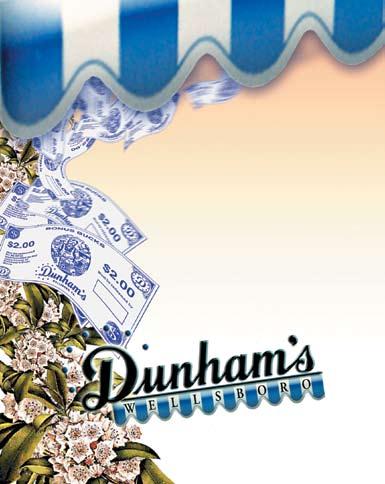

F OO dRINK

With their dairy farm in jeopardy, one family found a way to keep the cows at home
Story & Photos By Nicole Hagan
Down on the farm, age has little to do with how much you can do—at least, that’s how it’s always been for Rachel, Phillip, and Hannah Bachman. Although they are only 25, 20, and 18 years old respectively, these “kids” have helped to create and sustain God’s Country Creamery, a family-operated, artisan cheese business in Ulysses, Pennsylvania.
The creamery, also run by their parents Mark and Melanie, sells rawmilk cheeses to everyone from the local grocer in Genesee to the legendary Hyeholde Restaurant outside Pittsburgh. But the Bachman’s farm wasn’t always profitable. Back in December 2000, the family became burdened by the financial hardships of traditional dairy farming.
“We used to have about 80–100 cows, but we weren’t making enough money so we had to sell some and farm others out. We kept our 4-H animals, but we just couldn’t keep the rest,” says Melanie.
Selling their cows was not an easy decision, and the Bachman children tried to keep their family heritage alive by keeping a small dairy herd.
“Phil did it as a hobby, and Rachel helped out when she was home from college, but there was no hope of ever being profitable,” says Melanie.
just to give him a call. Unfortunately, about two months later, Brown passed away. Although the Bachmans could no longer avail themselves of his professional advice, “He gave us something much more valuable: his legacy,” says Mark.
Melanie notes that Brown was 100 percent accurate when he advised them to focus on the unique and scarcer forms of cheese.
“There are very few people out there who are making the varieties of cheeses that we make,” says Melanie. “Our cheeses are like the expensive imported cheeses.”
After building a cheese house addition onto their existing barn, buying a triple-wall insulated vat from Holland, and buying back some of their cows, the Bachmans made their first batch of cheese around Thanksgiving of 2008.

But after one special heifer was sent to Harrisburg, Melanie realized that something had to be done. “That’s when Phil came up with the idea of making cheese,” says Melanie. “He researched it for nine months for his senior project. It was his brain child.”
But Melanie worried about the amount of money it would take to start the business, and she was unsure of how far they wanted to take the idea.
To learn more about the cheese business, the Bachmans traveled to other farms and scheduled a meeting with David Brown, a chemistry professor from Cornell University and one of the most knowledgeable cheese experts in the United States. Brown covered everything from the economics of cheese making to the all-important concept of aging. “I came out of that meeting and was like ‘I don’t ever want to make cheese!’” jokes Melanie. “My head was spinning from all the helpful information.”
“Before we left, he told us that if we had any questions at any time,
“The cheese business works out better because cheese doesn’t go bad. In fact, it only gets better with age,” says Melanie. “Because of this, we have more control over how and where we sell it, as well as how much we sell it for.”
The Bachmans make ten different kinds of cheeses: seven varieties, including Blue, Gruyere, Jarlsberg, Caerphilly, and three different kinds of Havarti.
“The fact that we don’t mass produce our cheese is what makes it artisan,” says Phil. “And we’re always experimenting with ways of cooking to try and make it better.”
Their dedication has brought them high praise from culinary experts, such as Walter Scheib, the former executive chef at the White House. After tasting their cheeses, Scheib said that he admired their Heavenly Havarti, which “was just that, [heavenly],” became nostalgic for the Black Bear Gruyere, which “showed its age beautifully,” and was head-over heels for the Country Blue ,which, to him, achieved “Nirvana.”
And their cheeses are not only inspirational to the people who taste them, but also to the farming community. “Our little business gives hope for the next generation to keep the agriculture in the area going,” says Melanie.
For more information, visit www.godscountrycreamery.com.
Parents Mark and Melanie and children Rachel (not shown), Phillip, and Hannah are the driving force behind God’s Country Creamery.
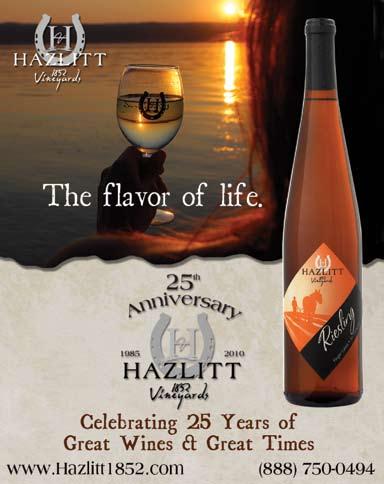

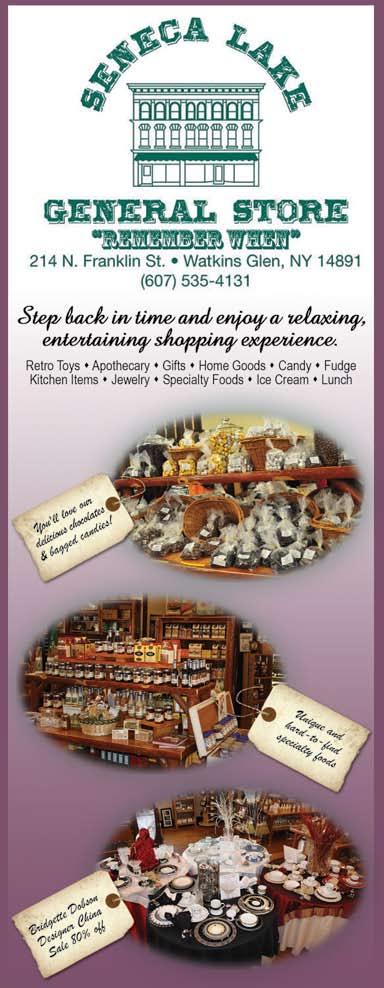
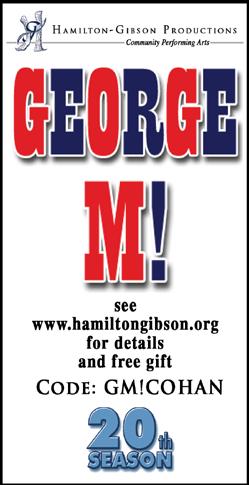


JFinger Lakes Wine Review Be Sure to Blush holly howell
ust in case you haven’t heard, PINK is back in style! After years of being misunderstood, the blushing Rosé wines of the world have stepped back into the limelight, and are fast becoming some of summertime’s favorite quaffs.
For most Americans, our first taste of pink arrived via a popular California wine by the name of White Zinfandel. Still one of the best-selling wines of the modern day, White Zinfandel was actually a mistake of sorts. While Sutter Home Winery was producing their classic Red Zinfandel back in the 1970s, the process was interrupted by a “stalled fermentation.” This resulted in a wine that had higher residual sugar levels. It was sweet. Also, the juice had to be pressed off the red grape skins a little earlier, which left the wine a lighter shade of pink. This critical error in winemaking proved to be a blessing in disguise, as the wine’s sales soared through the roof. To this day, many sophisticated wine drinkers say they first fell in love with wine when they tasted White Zinfandel!
However, that has also helped to deter sales of pink wines to folks who prefer a drier style of wine. The misconception is that all pink wine is sweet. On the contrary, most of the world’s pink wines are bone dry. White Zinfandel is actually the exception. But you never get a second chance to make a first impression, thus the sad tale of the American Dry Rosé. These elegant wines are out there, and they have flown under the radar for far too long.
One good clue as to the style of a pink is in the name. Many wines that are labeled as “Blush” are actually blends of red and white juices, creating an easy-to-drink refreshing style that leans toward the sweeter spectrum. On the other hand, wines labeled as “Rosé” tend to the drier side, although the color may closely match other Blush wines. These drier Rosés are usually made from red grapes only.
They pick up the flavors of the red grape but are made in a style that is meant to be served chilled.
Rosé is the signature wine of places like Provence, France. On the Mediterranean coasts of Spain, they are the worshipped Rosados. And in Sicily they drink bright pink Rosato with almost every meal. The fresh fruit flavor, high acidity and dry finish of Rosé are the secrets to why this wine is so ultimately food-friendly.
Thankfully, the European traditions infiltrated wine making here at home too. I am proud and happy to announce that the Finger Lakes is kicking out some of the best dry Rosé wines I have tasted in some time. Look for Hermann Wiemer Dry Rosé ($10), Penguin Bay Rose of Chambourcin ($11), Dr. Frank Dry Rosé ($13), Billsboro Dry Rosé ($14), Ravines Dry Pinot Rosé ($15), Zugibe Vineyards Dry Rosé ($16), and Red Tail Ridge Dry Rosé ($17). All are absolutely divine summer wines that pair especially well with light salads, vegetable dishes, spicy foods, and barbeque fare. Oh, and they can be amazingly thirst-quenching just on their own if you are so inclined—or reclined, by the pool, on a warm, sunny day!

Certified sommelier Holly Howell teaches at Rochester Institute of Technology and the Seasonal Kitchen Cooking School. Contact her at wineanddine@mountainhomemag.com.
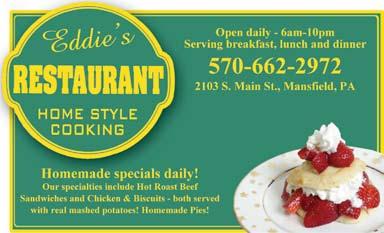


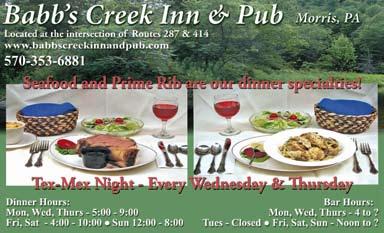
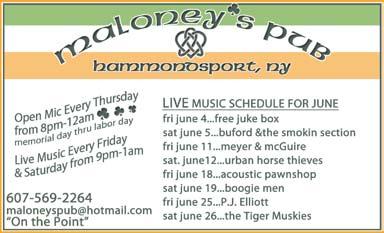



hOME & Come In and Have a Seat
Morris Chair Shop sells American-made furniture in the heart of timber country
Story and Photos By Nicole
The history of northern Pennsylvania is deeply ingrained within the bark of the timber industry. The forests of hardwoods, hemlock, and pine that cloaked the land provided work for sawmills and tanneries in the 1800s. And tucked within this blanket of historic foliage rests Dan Stoltzfus’s Morris Chair Shop.

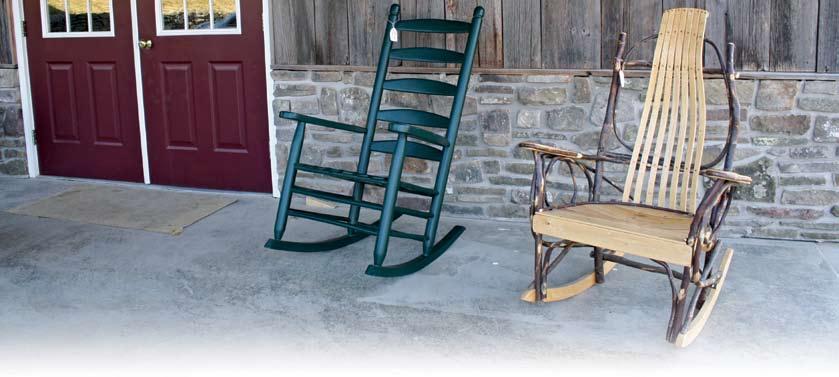
products and maintaining a retail outlet for other Zimmerman furniture.
dedication to high quality sturdy, American-made furniture.
Located 1.3 miles off State Route 287 in Morris, Pennsylvania, his store, built from the foundations of an old chestnut and hemlock-sided barn, mimics the rustic feel of the deciduous trees that surround it—as does the furniture he sells within it. In fact, his American-made, high-end chairs, cabinets, tables, and bedroom suites are created and shaped from the same local Pennsylvania timber that kept small businesses going over 200 years ago. “My store just seemed to fit well with the area,” says Stoltzfus.
Although formerly a mason, making furniture came naturally to him. “I learned most of my trade through family connections,” says Stoltzfus. Those family connections came in the form of his younger brother, Ray, who helped Stoltzfus get a job at the Zimmerman Chair Shop in Lebanon, Pennsylvania. Here, he learned the ins and outs of chairmaking and developed a professional relationship with the company—a relationship that would eventually make Morris Chair Shop Zimmerman’s largest sub-contracted manufacturer.
Through their collaboration, which continues to this day, Stoltzfus is able to make his chairs for wholesale, in addition to doing the finishing for Zimmerman
“Here, you’ll get your choice of many different styles, different finishes, and different species of wood,” says Stoltzfus. “Aside from our chairs, we actually specialize in custom finishes for other furniture and we have a lot of options for the tables we sell—a lot of leg and skirting options that pretty much allow the customer to design their own table their own way.”
Their chair selection ranges from Windsor, Mission, and Queen Anne styles to more contemporary chairs, both upholstered and non-upholstered. “We have everything from simple kitchen chairs to higher-end chairs that sell for upwards of $500,” says Stoltzfus. “They’re all made of solid wood: oak, maple, cherry, and some walnut. It’s just our standard. It’s what people want.”
Morris Chair Shop has grown from a one-man business to an enterprise that now employs twelve staff members, including four of Stoltzfus’s sons, his wife Joy, his brotherin-law, and his nephew. “Our business has changed a lot since the beginning,” says Stoltzfus, who notes that growth of his shop was fostered by the shutting down of other long-time chair manufacturing companies. “All over the U.S. furniture manufacturers have simply folded up, closed down, or outsourced their business. The whole global trend nowadays is to get things made in Vietnam or China.”
But as expediency begins to outweigh quality in much of the furniture market, one thing that will not change is Stoltzfus’s
“All the product lines we sell, which we don’t make here, are built in Pennsylvania,” says Stoltzfus. “Most people want Americanmade furniture. If anyone has any problem with their purchase, they know exactly where to go to get it fixed. We’re able to stand behind our furniture—all of which comes with a lifetime warranty. We’re proud of our American-made products made with Pennsylvania-grown lumber.”
Morris Chair Shop is open Monday through Friday, 8 am to 3 pm, and Saturday 9 am to 3 pm. Their complete product line can be seen in their catalog at the store or online at www. morrischairshop.com.
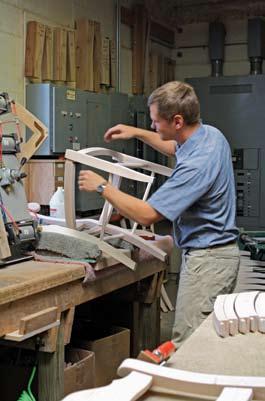
Left: Hans Stoltzfus, son of Dan, proves he is just as good a craftsmand as his father. Above: Morris Chair Shop has some “rocking” chairs for your front porch or sun room.



This 3-panel system to can produce up to 70% of the domestic hot water for a family of 4. After the possible rebates and incentives, this installed system could end up costing as little as $7,300 And you will have the monthly energy savings for the life of the system
Call us today to learn how Renewable Energy can work for you.


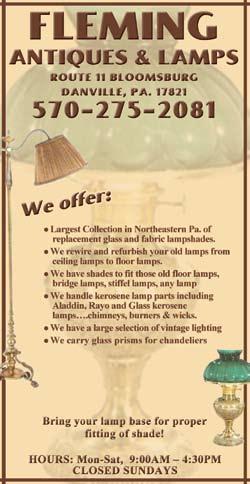

Someplace Like home Stings
dave Milano
The female bald faced hornet (BFH) builds marvelous, billowy paper nests, generally in plain view for all to admire, like under the eave near the back door.
The nests are indeed admirable. Layered exterior walls provide strength and insulation to protect their many larval cells inside, all accessible through a handy, round doorway at the bottom. Remarkable for efficiency and effectiveness, BFH nests have a high strengthto-weight ratio, very high material-toenclosed-volume ratio, and they are perfectly recyclable. (Made from chewed wood, they come directly from the earth, and return to it in sublime completeness, essentially as tree fertilizer.) Wonderful. But that’s as far as my esteem for the bald faced hornet goes, for they are, in my opinion, far more effective warriors than builders.
The National Audubon Society Field Guide to North American Insects & Spiders describes the habits and life cycle of the bald faced hornet, then closes with this casual remark:
“Adults are extremely protective of the nest and will sting repeatedly if disturbed.“
The field guide understandably avoids telling us what “disturbed” exactly means, but I will offer here that while the scale from calm to excitable is wide, and “normal” is certainly a subjective term, the BFH is clearly off the psychological charts. This is a genuinely, pathologically, hysterical bug. One would think, for example, that merely peering up at a nest and snapping a photograph would be counted as peaceful interest, but in the mind of a nesting BFH, a benign stare is apparently as good as a punch in the nose.
Of course it’s infinitely wise to accept God’s world gratefully, in the form He provided it, but the presence on this earth of swarming, biting, stinging insects is frankly just hard to take. I’ve been the victim of coordinated

attacks by yellow jackets (in retaliation for stepping alongside a ground nest), by European hornets (for picking up a pail they had evidently claimed by squatters’ rights), and by a particularly discourteous mob of honey bees (for, I think, leaning against their tree). Their barrages have left me with an assortment of welts and sores, and an abiding fidgety nervousness. It’s uncanny the power these things have. While I outweigh the typical BFH by a factor of something like 80 million, in my mind a roving hornet is roughly equivalent to a fully armed Apache helicopter.
The most common BFH, if only blessed with a minimal ability to reason (and of course a far more charitable personality) would qualify as a Super Hero. They have super power, super confidence and, without Hollywood embellishments or phone booth visits, appear on the scene with a menacing mask, lapped armor, antennae, and a positively deadly backside bayonet.
So I tread gingerly in stinger territory, And upon encountering one of the “disturbed” sort, I acquiesce, very willingly, to both our instincts—theirs to attack, and mine to run like heck, without a moment’s thought given to their better qualities.
Dave Milano is a former suburbanite turned parttime Tioga County farmer. You can contact him at someplacelikehome@mountainhomemag.com.






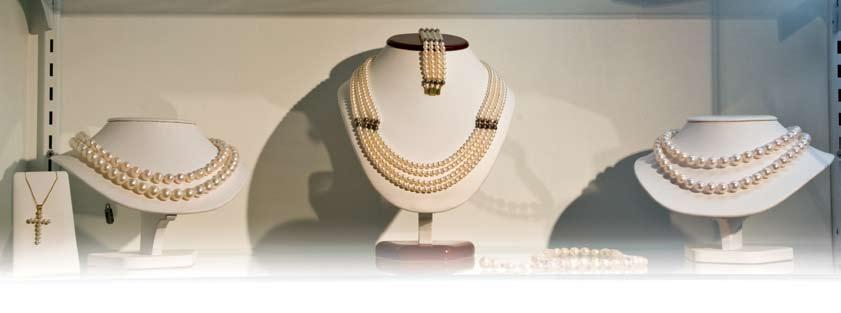

NM ARKET LACE
Shop Around the Corner Pearls of Wisdom
By Suzanne Meredith
irvana is being assigned to write about a jewelry store. If given the opportunity I would probably cover myself with enough sparkly stuff to outshine a Christmas tree.
Bong’s Jewelers in Corning, New York, would be the place to find baubles, beads, bangles, and bracelets to bedeck the whole tree. Gorgeous loose stones in every color are waiting to be custom set. Diamonds, gold, and silver are displayed with finesse and the pearls showcased are some of the finest in the world.
There have been many changes on Market Street over the last century, but Bong’s has remained a constant. Since 1892 the same family has run a quality jewelry store at the same location. The family originally lived in the German speaking part of Alsace Lorraine and changed their name from Bon to Bong to sound more German. The current owner, Jeffrey Bong, says by the 1870s his great-great-grandfather had moved to Long Island and was working as a watchmaker and a landscaper. There wasn’t enough business as a watchmaker to earn a living in those days—not many watches—so John Bong ended up as the landscaper

on Long Island at the Sagamore Hill estate of Theodore Roosevelt.
Eventually John and his brother moved to Corning in the late 1890s and opened their own store. It seems to be part of the family heritage to pursue other occupations before returning to small city life in Corning. But they all have done so, preferring life in a smaller, more personal atmosphere. Jeffrey says the family has always had a nice relationship with Corning, and each generation has maintained an active interest in the city.
Bong’s carries a good selection of Akoya pearls, considered the classic of cultured pearls. Jeffrey Bong says they are available in all price ranges and are a viable part of any wardrobe. These gems tend to form in several soft shades ranging from white and cream to a very soft pink.
For centuries pearls have been considered a symbol of purity and love. Natural pearls, virtually nonexistent today in the marketplace, command exorbitant prices. Cultured pearls, however, have comparable luster and beauty and are much more affordable.
The most valuable pearls, from the South Seas, are larger and some are found in a rich iridescent black. A strand of black pearls the size of marbles is an eye-catcher in the Bong showroom. “We have pearl items ranging from $50 to $10,000,” says Jeffrey.
All pearls are created by living organisms, mollusks, with a talent for coating irritants with lustrous nacre. This gem is soft, delicate, and porous and can be damaged by perfume, cosmetics, and hairsprays. The gems can also be scratched easily so should be stored away from other jewelry. With reasonable care a strand will last for many lifetimes.
An abiding tradition for June, the month of weddings, is a gift of pearls for the bride.
Legend claims the Hindu deity Krishna discovered pearls when searching land and sea for a suitable wedding gift for his daughter. Other myths indicate pearls have healing properties. Poor grade pearls are ground into a powder used in calcium supplements these days, so perhaps there is some basis to that story.
The store reflects personal attention and a focus on quality in every area. “Jewelry is a symbol; it should be suited to the personality of each individual,” says Jeffrey.
Fingerlakes writer Suzanne Meredith has written for various publications including Antique Trader. She is a first-time contributor to Mountain Home
Owner Jeffrey Bong’s family has run the store since 1892.









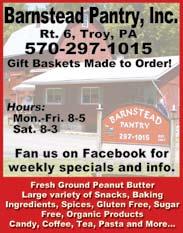




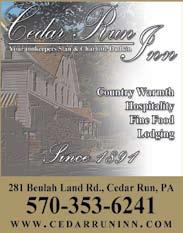




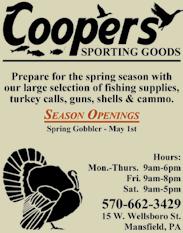

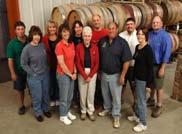
















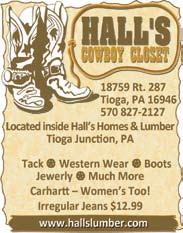




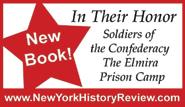

Photograph by Bernadette Chiaramonte-Brown, Wellsboro, PA
